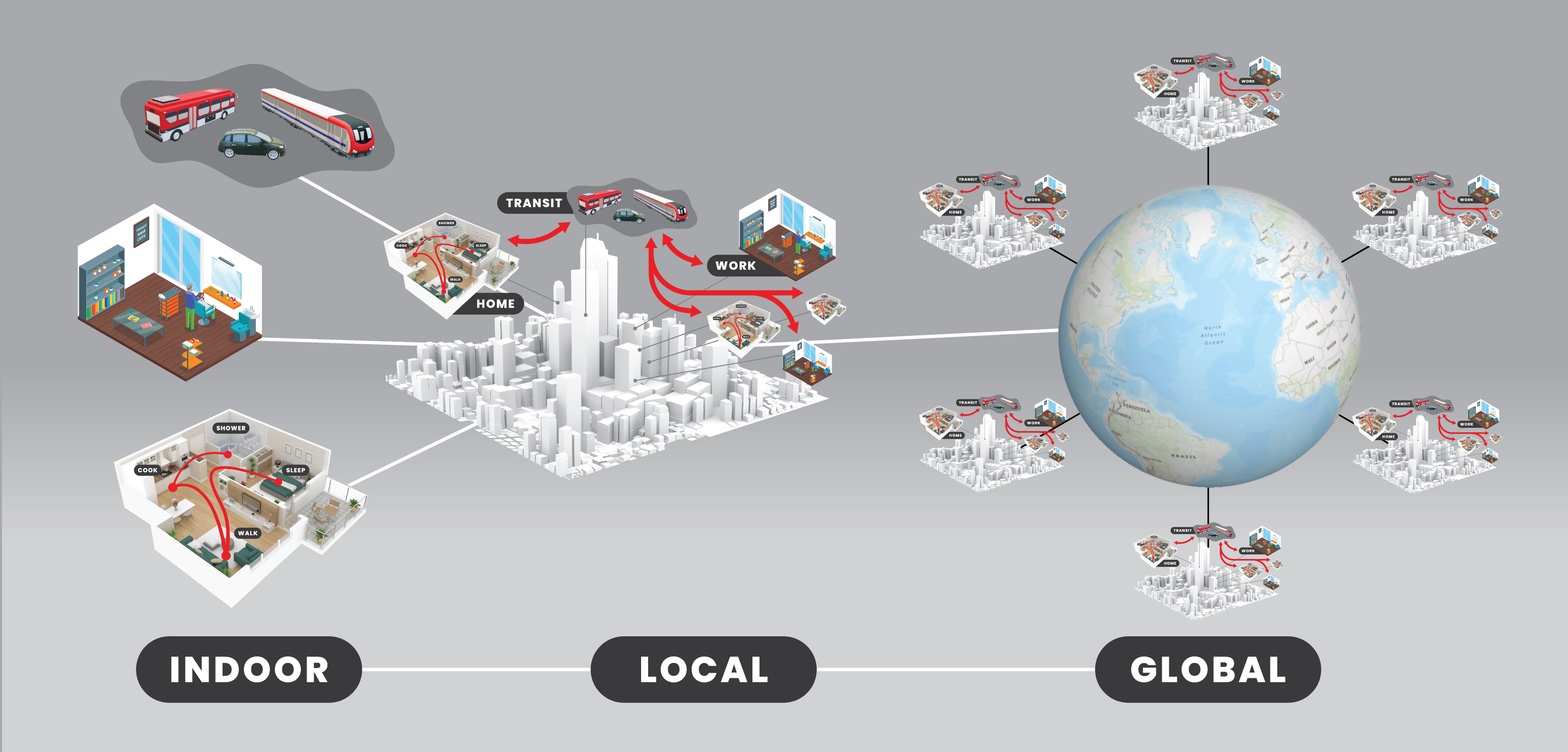Home
Motivation

In recent years, the importance of indoor environments for our health and wellbeing has become increasingly apparent. Indoor environments (e.g., homes and workplaces) are reservoirs of a myriad of hazardous contaminants, including chemical additives, pathogens, and airborne and settled particles (dust).
We typically spend over 90% of our time indoors, where we considerably influence indoor environmental quality by our mere presence and activities (e.g., cooking). Fortunately, this influence provides an opportunity for public health intervention at the locus of the individual. By understanding how we can influence indoor environmental quality, and by modifying our activities accordingly, we can minimize or even eliminate unnecessary risks to our health.
Development
A computational modeling framework, known as the Activity-Based Indoor Contaminant Assessment Model (ABICAM), was developed to investigate impacts of humans and their activities on indoor environmental quality and associated contaminant exposure. ABICAM leverages a "mass-balance" methodology that is well-supported by a large body of peer-reviewed scientific literature. The framework itself has been published in several journal articles.